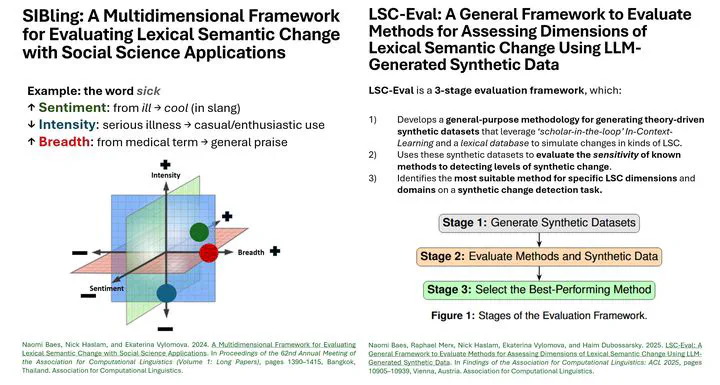Dimensions of Semantic Change: Validation and Application of the SIBling Framework
Sep 24, 2025· ·
0 min read
·
0 min read
Naomi Baes

Abstract
Lexical semantic change (LSC) provides insight into cultural and social dynamics, yet existing approaches often examine it in isolation, as a unitary construct, and lack historical benchmarks. I present two complementary frameworks. SIBling models semantic change along three dimensions – Sentiment (valence of a target’s contexts), Intensity (emotional arousal and use of intensifiers), and Breadth (diversity of usages) – offering an integrated way to trace how word meanings evolve. Case studies of mental health concepts show broadening, intensification, and shifts in sentiment that reflect cultural trends such as stigmatization, problematization, and concept creep. To evaluate such methods, I introduce LSC-Eval, a three-stage evaluation framework for generating synthetic datasets that simulate semantic change, test method sensitivity, and assess method suitability for specific dimensions and domains. Using LSC-Eval to test the SIB Toolkit validates its ability to capture synthetically induced change, and therefore naturally occurring change, and highlights challenges for state-of-the-art models in detecting affective dimensions of LSC. | Slides Above.
Event
National Research Council Canada – September 24 – Dimensions of Semantic Change: Validation and Application of the SIBling Framework by Naomi Baes
Location
Remote